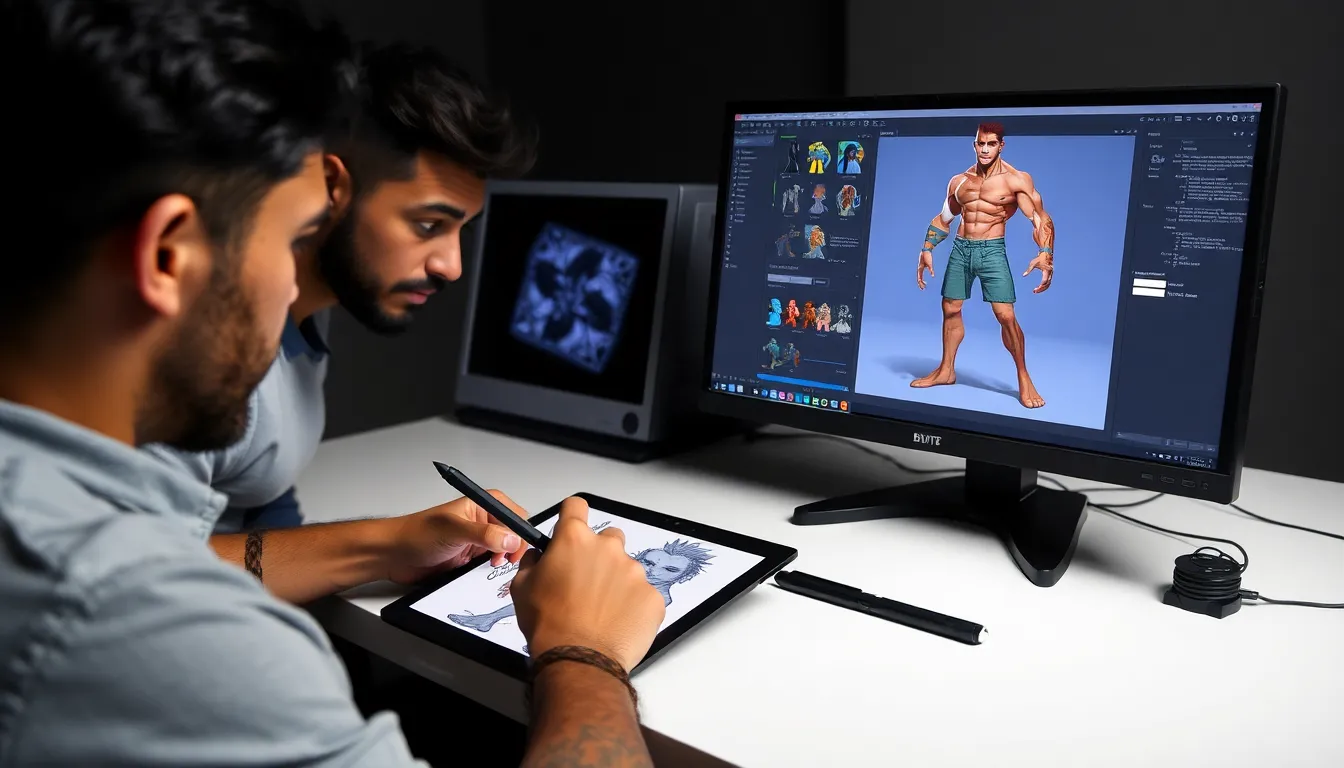Table of Contents
ToggleIn the vibrant world of character design, creativity knows no bounds. Whether it’s a quirky sidekick or a brooding anti-hero, the right character can steal the spotlight and capture hearts. But how do designers breathe life into these imaginative beings? It’s all about the concepts that lay the foundation for unforgettable characters.
Understanding Character Design Concepts
Character design merges creativity and function. Designers shape characters that resonate with audiences, utilizing foundational concepts to achieve memorable creations.
The Importance of Character Design
Character design builds emotional connections. Memorable characters enhance storytelling, making narratives engaging. Viewers often invest in characters’ journeys, fostering attachment and empathy. Strong designs leave lasting impressions, encouraging audience loyalty. Unique visual styles set characters apart, ensuring they capture attention in various media. Designers must consider cultural significance to resonate deeply with diverse audiences. Crafting relatable and authentic characters involves thorough research and understanding of audience expectations.
Key Elements of Character Design
Character silhouette stands out in design. A distinct outline helps audiences recognize characters quickly. Color palettes evoke emotions and communicate characteristics. Shapes such as curves suggest friendliness, while sharp edges may denote villainy. Facial features express emotions, adding depth to personalities. Clothing styles convey social status or background, contributing to character identity. Every detail matters, from accessories to posture. Consistency in design across different poses strengthens recognition and believability. Thorough exploration of these elements enables designers to create characters that resonate strongly with audiences.
Types of Character Design

Character design can transform concepts into visually striking personas. Two main types exist: 2D character design and 3D character design.
2D Character Design
2D character design involves creating characters in a flat, two-dimensional format. Artists utilize traditional and digital tools to illustrate characters for animations, comics, and games. This process often emphasizes color schemes, line work, and stylization. Iconic examples include cartoon characters, which rely on vibrant palettes and distinct silhouettes. Designers focus on exaggeration and expression to convey personality traits effectively. Overall, simplicity and clarity play essential roles in establishing memorable 2D characters.
3D Character Design
3D character design introduces depth and dimension through modeling techniques. Artists use software to create lifelike representations suitable for video games and animated films. Textures and lighting significantly enhance realism, engaging audiences further. Movement becomes a critical aspect, with rigging techniques allowing characters to pose and animate fluidly. Iconic figures in this category often showcase intricate details, from facial expressions to clothing folds. Designers prioritize creating dynamic, three-dimensional figures that captivate audiences in immersive environments.
Processes in Character Design
Character design involves several key processes that transform initial ideas into compelling visuals. Understanding these methods enhances the design experience, enriching creativity and function.
Concept Sketching
Concept sketching serves as the initial phase of character development. Artists create rough drawings to explore different ideas, focusing on shapes, poses, and expressions. Sketches provide quick visual representations, allowing designers to experiment and iterate without limitations. Feedback from peers can refine these concepts further, enhancing the final outcome. A diverse range of sketches can result in unique character traits and enhanced storytelling potential. Artists often revisit these sketches throughout the design process to maintain alignment with core concepts.
Color Theory in Character Design
Color theory plays a critical role in defining a character’s personality and mood. Color palettes guide the emotional response from the audience, influencing perception of attributes like heroism or villainy. Utilizing contrasting colors can create visual interest, while complementary colors enhance cohesion. Colors evoke emotions, such as warmth from reds and oranges or calmness from blues and greens. Designers consider cultural connotations attached to colors to ensure authenticity. Harmonizing hues can lead to striking, memorable characters that resonate with audiences.
Tools and Software for Character Design
Character designers utilize various tools and software that cater to different styles and processes. Effective tools enhance creative expression and streamline character development.
Digital Art Software
Numerous digital art software options exist for character design. Adobe Photoshop remains popular for its extensive features, including brushes and layers. Clip Studio Paint offers specialized tools for illustrations, making it suitable for comic artists. Procreate, favored on iPads, provides an intuitive interface with customizable brushes that allow for fluid drawing experiences. Blender stands out in 3D modeling, enabling designers to sculpt characters with realism. Incorporating the right software significantly influences the design process, aiding in the creation of distinct and captivating characters.
Traditional Art Supplies
Traditional art supplies play an essential role in character design as well. Pencils and sketchbooks remain foundational tools for initial concept sketches, fostering creativity through exploration. Markers and colored pencils help artists add vibrant color quickly, bringing characters to life with rich hues and textures. Watercolors offer fluidity and softness that can create unique moods and atmospheres. Inks, used for detailed line work, enhance clarity and precision. Choosing the appropriate traditional materials allows designers to express their unique style while laying the groundwork for digital interpretations.
Character design is a fascinating blend of creativity and technical skill that shapes the way stories are told. By understanding key concepts and utilizing the right tools, designers can craft characters that not only captivate but also resonate with audiences on a deeper level. Whether working in 2D or 3D, the attention to detail in aspects like silhouette, color, and expression plays a crucial role in character relatability. As designers continue to innovate and explore cultural contexts, the potential for creating unforgettable characters expands. Embracing these principles ensures that each character leaves a lasting impression, enriching narratives across various media.




